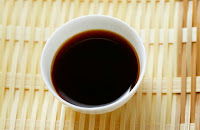E = English, V = Vietnamese, P = Pronunciation
Unfortunately in Vietnamese, it isn't as simple as 'you' and 'me' or 'he' and 'she'. There are different ways to address someone, depending on their age, gender and your relation to them. Learning and understanding when to use these will probably be the hardest of the lessons.
A lot of these titles literally refer to someone as if they are related to you, so just think of everyone as your family and hopefully, you'll understand the titles better.
__________________________________________________________________________
Addressing Other People
V = Ông
P = Olm
E = Elderly man or Mr. (literally means grandpa)
V = Bà
P = Baa
E = Elderly woman or Mrs. / Ms. (literally means grandma)
V = Bác
P = Baack
E = Man or woman older than your parents or Mr. / Mrs. / Ms.
V = Chú
P = Choo
E = Man slightly younger or about the age of your parents or Mr. (literally means uncle)
V = Cô
P = Gore
E = Woman slightly younger or about the age of your parents or Miss (literally means aunty)
V = Anh
P = 'ang' in sang
E = Male teenager or young adult (literally means brother)
V = Chị
P = Chee
E = Female teenager or young adult (literally means sister)
V = Bạn
P = B'an' in tantrum
E = Male or female about your age (literally means friend or mate)
V = Em
P = Ehm
E = Male or female child or younger (literally means younger sibling)
__________________________________________________________________________
Addressing Yourself
Below are different titles that can be used, depending on who you're speaking to, to refer to yourself.
V = Cháu
P =
E = Use if speaking to someone much older than you or your superior
V = Em
P = Ehm
E = Use if speaking to someone older than you
V = Bạn
P = B'an' in tantrum
E = use if speaking to friends
V = Tôi
P = Toy
E = Use this if completely unsure
V = Con
P = Gone
E = Use ONLY with your parents
__________________________________________________________________________
Very Informal Titles
These titles are considered very informal and impolite, so should only be used with close friends.
V = Tao
P = Tow
E = I / Me / My
V = Mày
P = May-ee
E = You / Your
V = Nó
P = Noh
E = He / She / Him / Her































